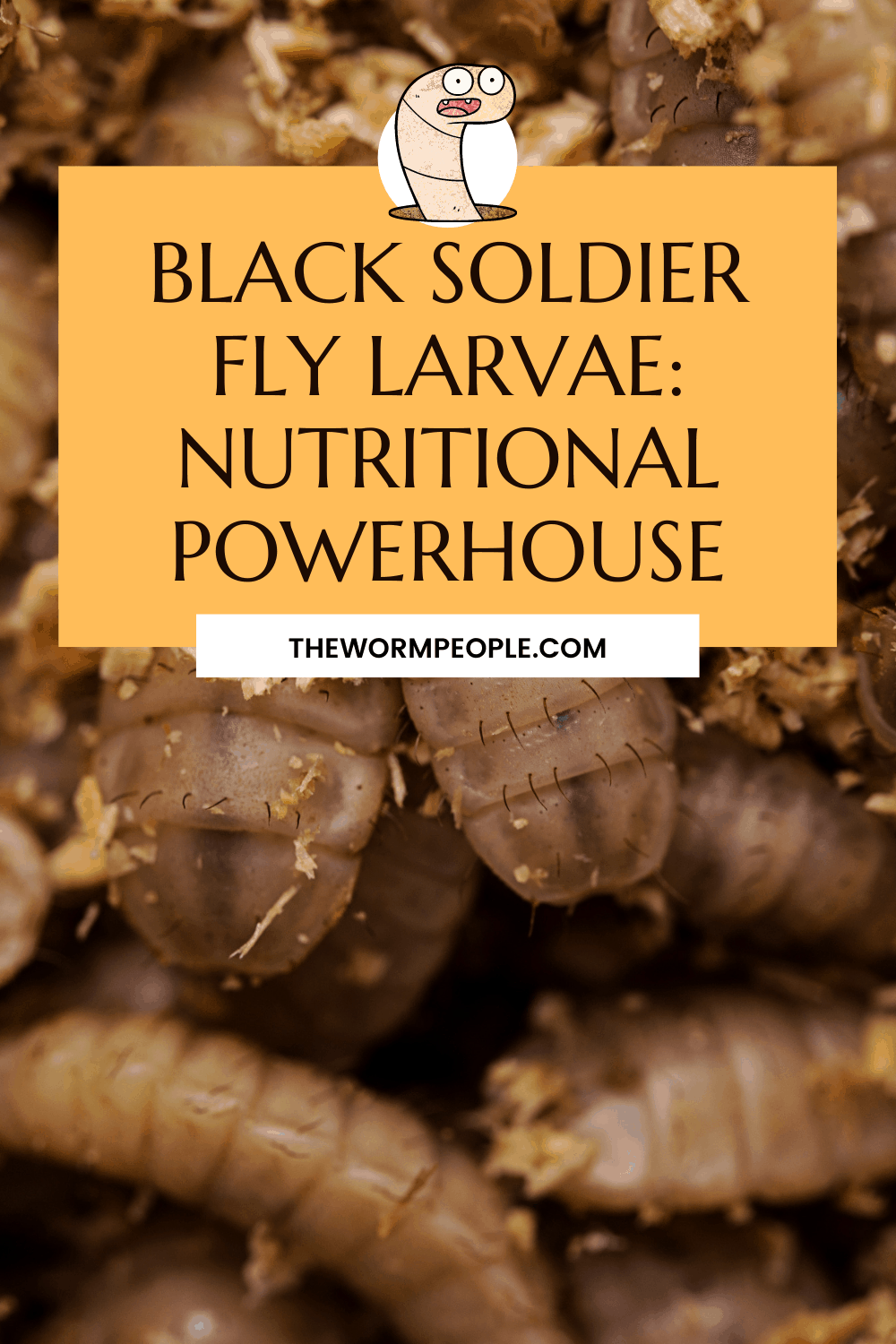
Jeffery Jago is a expert in horticulture and worm breeding. With a background in plant cultivation
Last Updated on April 24, 2021 by Jeffery Jago
Do you want a healthy, sustainable, and convenient food source for your chickens or other animals? If so, then black soldier fly larvae might be the answer for you. Black soldier fly larvae are an edible insect that is high in protein and rich in essential vitamins and minerals. This article will go into detail about this amazing food source, including a full black soldier fly nutritional value chart.
Let’s get into it
Black soldier fly nutritional value
Black soldier fly larvae are high in protein and contain at least 18 amino acids, including all nine essential aminos. They have a complete profile of fatty acids as well that includes Omega-s for both short-chain (Omegas) and long chain (ω-s), which is hard to find with plant foods alone. In fact, black soldier fly larvae provide more than twice the daily recommended intake of vitamin A when compared to beef liver; over four times the iron found in spinach or broccoli; higher levels of calcium than milk and much lower concentrations of cholesterol.
The black soldier fly larvae also contain a good portion of phosphorus, potassium, magnesium, selenium, and zinc – all essential for cell maintenance.
When dried out, they don’t lose many of these nutrients, but they do lose some of the fat content.
When you compare black soldier fly larvae to other protein sources like beef or pork liver, for example, the BSFL provides a lot more micronutrients with fewer calories and cholesterol – about one-third as much in fact! They also have higher levels of Omega-s long-chain fatty acids which are important for maintaining healthy cells and hormones.
Out of everything here, protein and fat value are the most important thing’s when it comes to what your fees your animals need. But if you want to supplement with dry feed, BSFL is so much more nutritious and cost-effective in the long run.
So is black soldier fly larvae good for your animals?
Yes, lets expand on why!
High protien
While many plant-based proteins are commonly used in animal feed, they vary greatly in protein content. For example, soybeans and bran meal contain about 26% of their weight as protein by dry matter basis. Fly larvae on the other hand can yield anywhere from 31%-45%! This is because fly larva feeds off manure which has a higher concentration of nutrients including nitrogen – so there’s no need to worry about feeding them with any extra human food scraps or grains for an added boost like you would cattle since those little critters have it all taken care of internally.
It is believed that the protein concentration of this feed is high enough to make lean animals healthier and stronger. The lack of proteins in traditional animal feed can lead to an undernourished body, which means a weakened immune system that won’t be able resist diseases easily or muscle loss where it will affect performance such as weight-bearing strength and speed.
High Calcium and Phosphorus
BSF larvae are the most calcium-rich food on this list. They contain 80 times more than other commonly eaten insects and have 2.8 – 6.2% calcium, 1 -1.2% phosphorus, enough nutrients for animal feed; at the same time is one of the best live foods to cater to animals with special diets such as shrimp or crab–and they also provide a much cheaper alternative when feeding livestock like cows that need Calcium and Phosphorus in their diet from the fetal stage until adulthood.
High in Good Fats
BSF larvae are rich in lauric acid which makes it easier for pets to absorb nutrients.
A study found that 53% of the fat is made up of this good substance making BSF a more nutritious option than other fats typically used as feed ingredients.
The BSF larvae fat contains AWME, a secreted protein that has antibacterial properties and can kill lipid-coated viruses such as HIV or measles. It also helps to protect the intestinal tract of animals during development by strengthening their digestive system and absorbing nutrients more efficiently into the body. If an animal’s diet does not contain enough fatty acids then they will have less developed intestines which are difficult for digesting food properly because it is easily related to their intestine health – BSF larva makes sure your animals get enough fat!
conclusion
In conclusion, BSF larva is a sustainable option to livestock feed because they are low-cost and contain high levels of protein. In addition, the larvae have many health benefits for animals such as increased intestinal development, immune support, improved digestion, and more!

